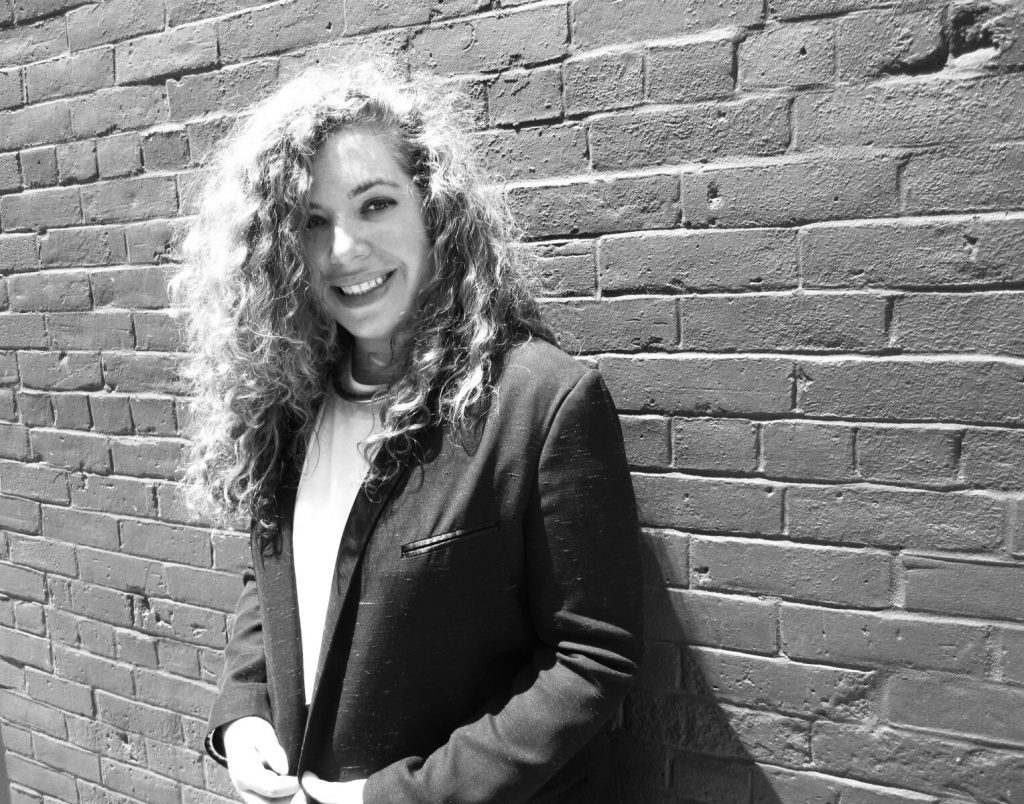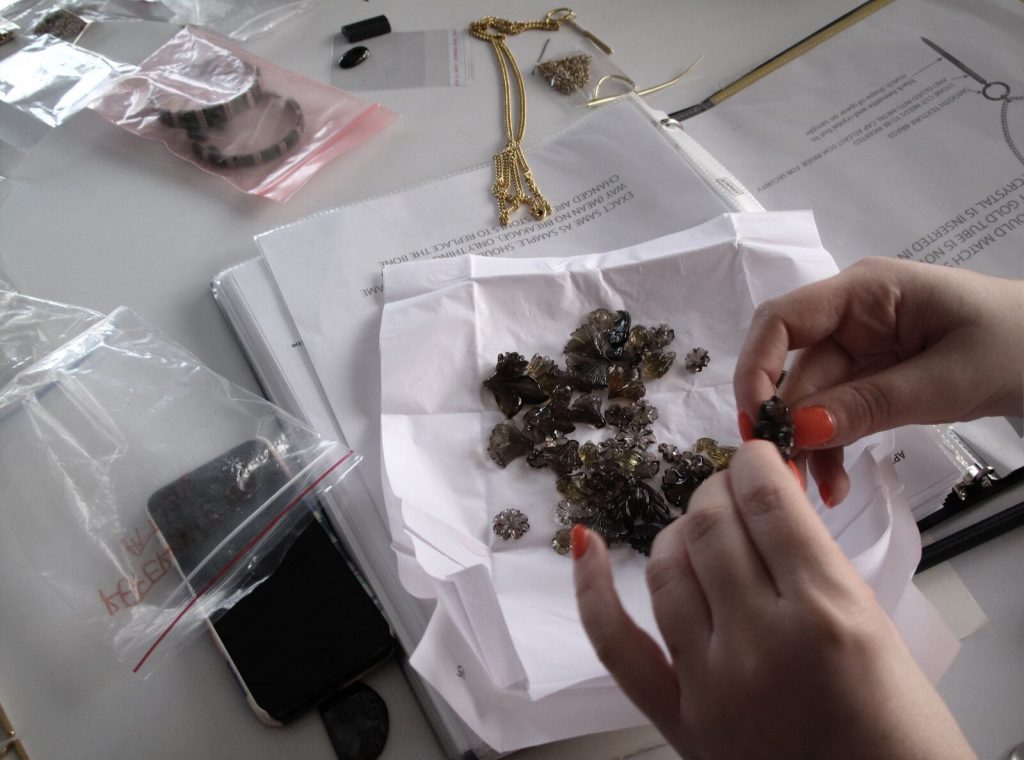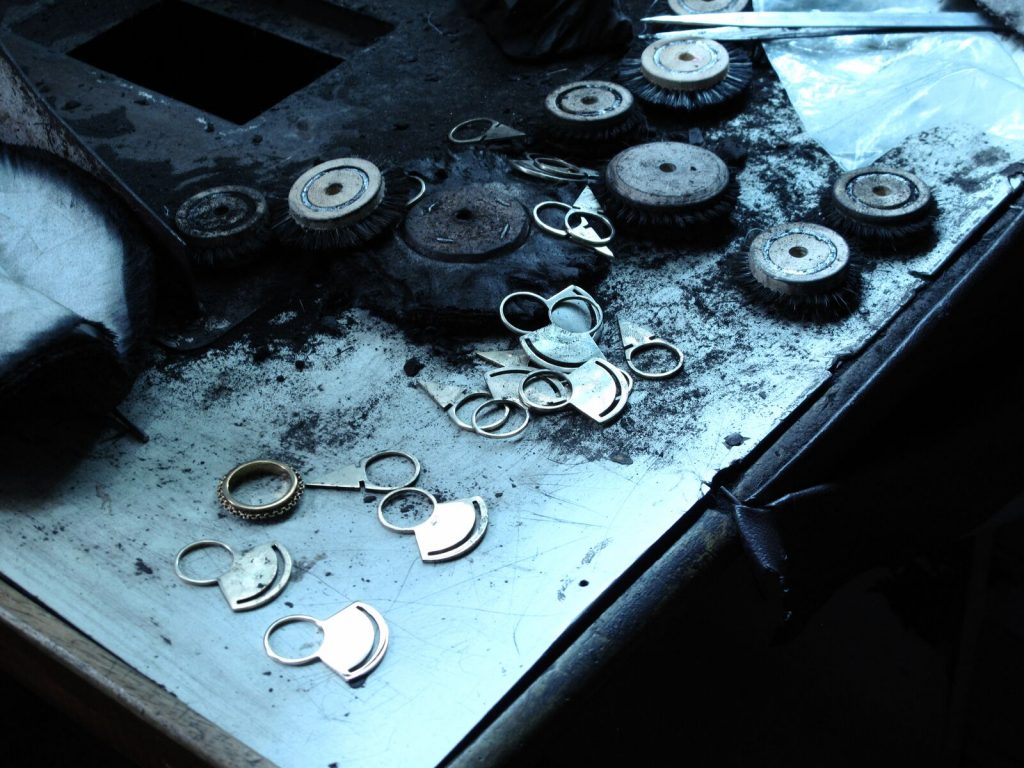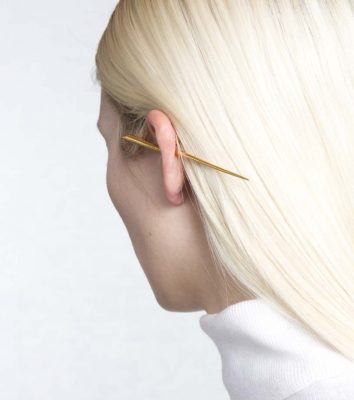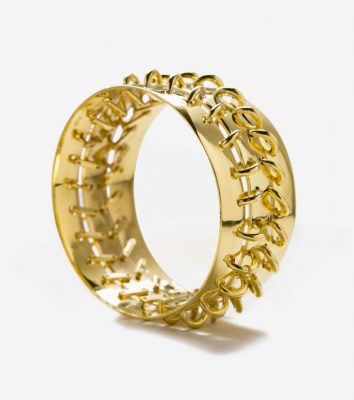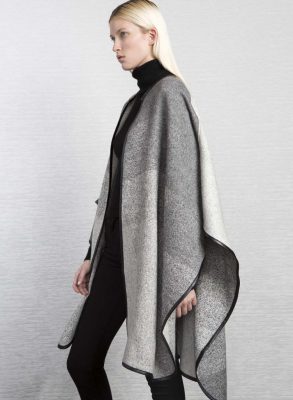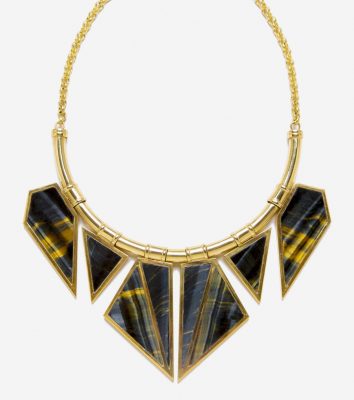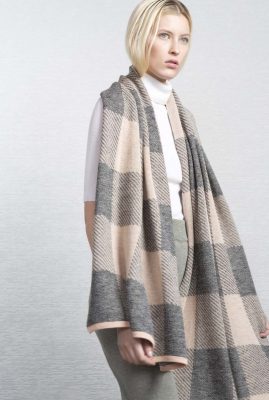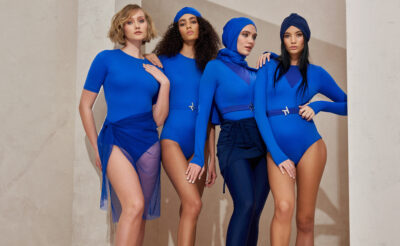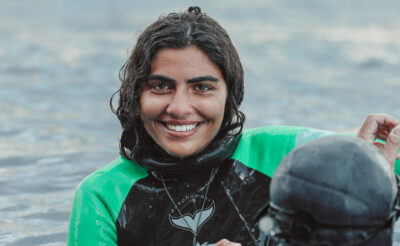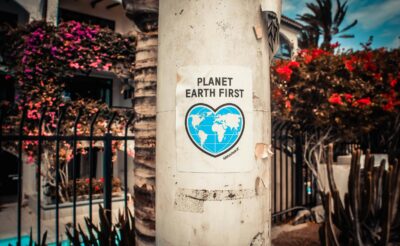A Peace Treaty is a brand with a voice. Backed by the CFDA and offering artisanal jewellery, capes and caftans with striking ingenuity, in MOJEH Issue 31, creative director Dana Arbib told us more about her mission to make slow fashion fashionable.
By Natalie Trevis
You champion artisanal techniques from around the world, how did that come about?
My parents were completely the source of where it all began. My father is an incredible fashion resource. He would show me all the beautiful brands he grew up loving, and explain how things were made with such enthusiasm. My mother would keep her special handwoven pashminas in a protective box, which I would open without her knowing, so I could run my hands over them.
You were involved in humanitarian work growing up. How has this influenced A Peace Treaty?
Being a humanitarian is how I was raised. From a young age, the belief that “if you have the resources to do something, then do it” was ingrained in me. I volunteered as a young teenager for different global humanitarian efforts, and the connections I built and still maintain has enabled A Peace Treaty to source some of our production. I’m compelled to showcase and preserve the talents and handmade techniques indigenous to special parts of the world.
What’s your favourite place to travel to for design inspiration?
I know it sounds so cliché… but Paris. France as a whole celebrates and supports the idea that the true luxury is handmade. Le Marché au Puces de Saint-Ouenis is a favourite place, where I love to see the rare and spectacular.
Which place in the world feels the most like home and why?
I would have to break it down into percentages: New York 35 percent, Tel Aviv 30 percent, Toronto 25 percent, Rome 10 percent I have lived in New York for the longest, but in general, it feels like a transient place somehow.
In your work for A Peace Treaty, what has been the most challenging place to visit?
I would probably say India, for the main reason that it is difficult to get our jewellery collections completed in a small amount of time, and every season, I only have about two weeks there. That being said, I also love it: it’s a beautiful, vibrant, inspiring country, and the team there for A Peace Treaty does gorgeous work. I think the best things in the world can sometimes also be difficult.
What are some of the techniques that have surprised you on your travels?
Indigo mud printing was something new and surprising for me. It is so simple and beautiful to create. Artisans take blocks of wood cut into patterns, dip them into a clay bowl of mud, and print a pattern on the fabric. They let the mud dry in the sun, then dip it into vats of indigo that are underground. At the end, you have a reverse print effect. Ok, maybe it’s not so simple!
Do you think the fashion industry has a greater responsibility to produce clothing ethically?
Yes, I think there is so much waste in the industry. Even though we clearly explain to vendors that we make pieces individually by hand, many stores will return an item for the tiniest natural flaw, leaving us with stock we have to turn around in another fashion. Yet, what makes A Peace Treaty’s products so beautiful are those imperfect moments in the handmade techniques we proudly support and use. Many luxury brands burn the unsold stock at the end of the season; it’s so damaging and wasteful. Outlet malls would be the obvious answer to unload waste of that volume, but unfortunately, there is a taboo around them, too.
You are part of the CFDA {FASHION INCUBATOR} programme. How did that come about?
One of my closest friends is ready-to-wear designer Jonathan Simkhai, who was in the previous 2.0 incubator, and told me that it was such an incredible and positive experience for him. The support is priceless: not only do you get advice from successful people in the industry, but you also build relationships with so many people in different facets of your business.
Do you think it is possible to sustain your model as A Peace Treaty grows?
Absolutely. We’re concentrating on working with certain countries that have the possibility to grow our production and produce seasonal and ‘core’ A Peace Treaty items. We figure out what everybody does best, and spread the work accordingly.
What’s your vision for the future of A Peace Treaty?
To create an iconic, handmade, travel-rich lifestyle brand and to make slow fashion fashionable. A Peace Treaty hopes to make our travel stories viral, and translate our aesthetic into different markets, like a home line and more.


